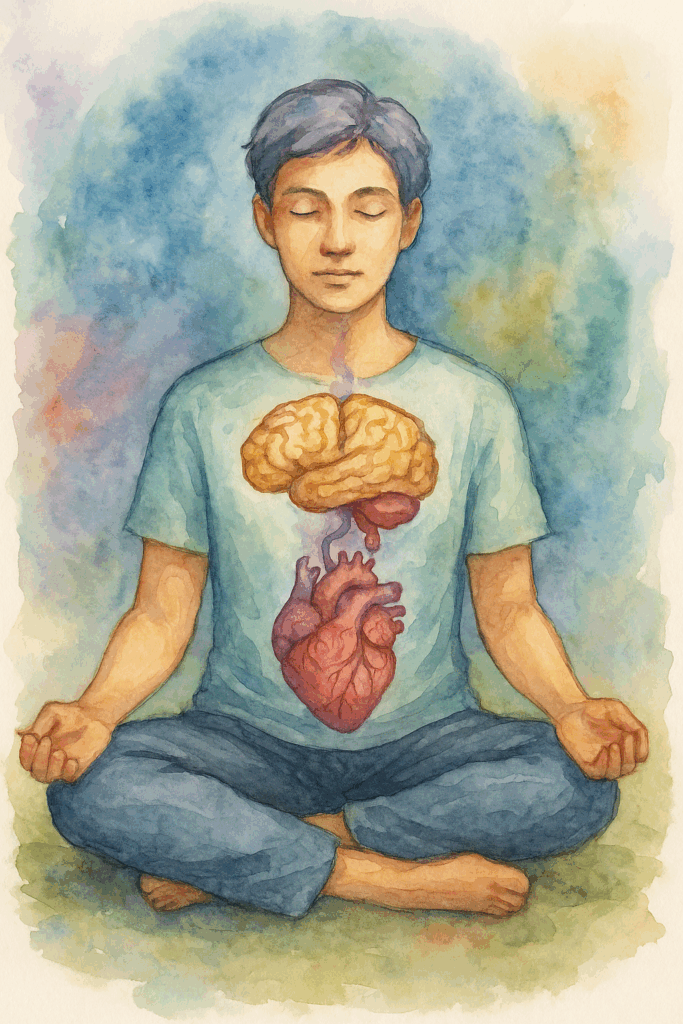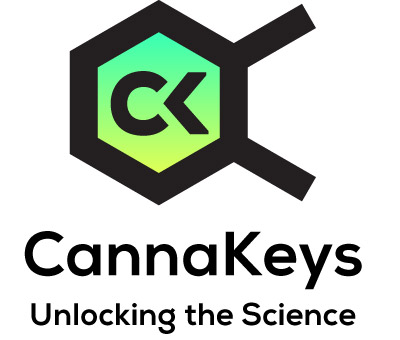In classical anatomy and physiology, the human body is commonly mapped and divided into organ systems—groupings such as the nervous, immune, respiratory, endocrine, and cardiovascular systems, among others—each defined by its structure and function. These divisions have provided a helpful framework for clinical diagnosis, medical education, and research. However, it’s essential to note that the number and categorization of organ systems are not fixed and vary depending on the model or medical tradition being referenced. Some frameworks list 11 systems, while others include more or fewer, often leaving out less structurally defined but functionally critical systems, such as those governing emotional regulation, stress resilience, or consciousness.
At CannaKeys, we recognize that emerging research—especially in endocannabinoid science and integrative medicine—is challenging these older boundaries. The interplay between mental and emotional states, physiological regulation, and disease outcomes is undeniable. For this reason, we’ve added the Mental/Emotional System as a distinct category in our platform—reflecting its deep functional relevance, its neurological and biochemical basis, and its therapeutic importance across a wide range of health conditions.
What follows is an exploration of how this system is defined in the context of endocannabinoid medicine, and how recognizing it can help clinicians and patients alike reframe symptoms, restore resilience, and support whole-person healing.
The Mental-Emotional System and the Healing Potential of Cannabinoid-Based Therapies
In the evolving landscape of integrative medicine, the importance of addressing the mental-emotional system is increasingly clear—particularly in the context of chronic illness, trauma, and stress-related conditions. At the intersection of neurobiology, psychology, and somatic awareness lies a powerful but underrecognized framework: the endocannabinoid system (ECS). This system not only maintains physiological balance but also plays a central role in regulating emotional tone, cognitive flexibility, and stress resilience.
Why Recognizing the Mental-Emotional System Matters
Mental, Behavioral, and Neurodevelopmental Disorders (MBND) disrupt more than thoughts and behaviors—they impact the very equilibrium of the body’s internal regulation. These imbalances often originate or are worsened by chronic stress, trauma, and social or environmental adversity. They are also recognized as major contributors to the onset, progression, and severity of chronic disease, increasing a patient’s vulnerability to a wide range of comorbid conditions.
Yet, while traditional medical models often isolate mental and emotional health from physical pathology, emerging endocannabinoid science challenges that divide. ECS components—CB1 and CB2 receptors, endocannabinoids like anandamide (AEA) and 2-AG, and their metabolic enzymes—are densely concentrated in brain regions involved in emotional memory, executive function, and mood regulation (e.g., the amygdala, hippocampus, and prefrontal cortex). These findings suggest that the mental-emotional system is not abstract—it is physiological, dynamic, and modifiable.
Cannabis as a Catalyst for Self-Regulation and Insight
One of the most profound yet often overlooked reasons cannabis benefits such a diverse range of patients is that it affects both mind and body—not merely masking symptoms, but enhancing the body’s intrinsic capacity for healing and self-awareness.

When appropriately matched to an individual’s needs—with the right chemotype, dose, form, and setting—cannabinoid-based therapies tend to induce two key outcomes:
- A deep sense of relaxation, both physically and emotionally, enabling patients to shift out of sympathetic overdrive;
- A recalibration of systemic function at the cellular level, helping restore homeostasis across neurological, immune, and endocrine axes.
For many, this therapeutic state also opens a door to introspection, emotional release, and meaningful self-inquiry. Patients often report accessing new perspectives, suppressed emotions, or insight into the origins of their illness—elements that may otherwise remain dormant or unreachable through conventional treatment.
Setting the Stage for Transformation: Intention and Environment
To harness this mental-emotional shift as a therapeutic asset, it is essential to consider not just the medicine, but also the intention and setting in which it is used. A calm, safe, and supportive environment, ideally free from interruption or judgment, allows patients to deepen their inner exploration. Whether practiced alone or in the presence of a trusted sitter, therapist, or guide, the conditions surrounding the experience often shape its long-term impact.
Clinicians can help optimize outcomes by:
- Encouraging clear intention: Invite patients to reflect on what they hope to explore or shift during their cannabis-supported experience.
- Creating a supportive setting: Recommend spaces that are physically comfortable and emotionally secure.
- Reframing symptoms: View them as meaningful signals—invitations or even demands for change—rather than mere dysfunction.
- Tailoring cannabinoid formulations: Use personalized cannabinoid profiles (THC:CBD ratios, terpene combinations) that support both physical symptoms and emotional processing.
- Recommending integrative supports: Encourage the use of mind-body techniques—such as breathwork, meditation, yoga, or trauma-informed counseling—to help integrate and embody insights that arise.
A New Model for Healing
Recognizing the Mental/Emotional System as a distinct organ system—as reflected in the CannaKeys platform—represents a critical step toward a more complete understanding of human health. It aligns endocannabinoid medicine with the principles of mind-body integration, offering a framework in which neurobiology, personal insight, and emotional regulation converge.
Notably, clinical research into conditions related to the Mental-Emotional System ranks second only to nervous system disorders in terms of ECS-focused investigation. As of mid-2025, over 450 clinical trials have been conducted examining the therapeutic potential of ECS modulation for mood, stress, anxiety, trauma, and behavioral disorders—a testament to the growing scientific recognition of the ECS’s pivotal role in emotional health and regulation.
It’s also important to recognize that while cannabis can be a powerful catalyst, it is not the only path to this kind of healing. A therapeutic cannabis experience can reveal a way of engaging with the body’s innate intelligence, but that map—once drawn—can often be revisited through other modalities such as meditation, breathwork, somatic therapy, or mindful presence. In this way, the plant becomes a map-maker, not the territory—a guide, not a gatekeeper. The capacity for emotional healing, insight, and self-regulation ultimately resides in each individual’s own agency.
Ultimately, when cannabinoid-based interventions are used with intention, care, and context, they can become more than symptom managers—they can become catalysts for inner coherence, healing, and lasting transformation.


